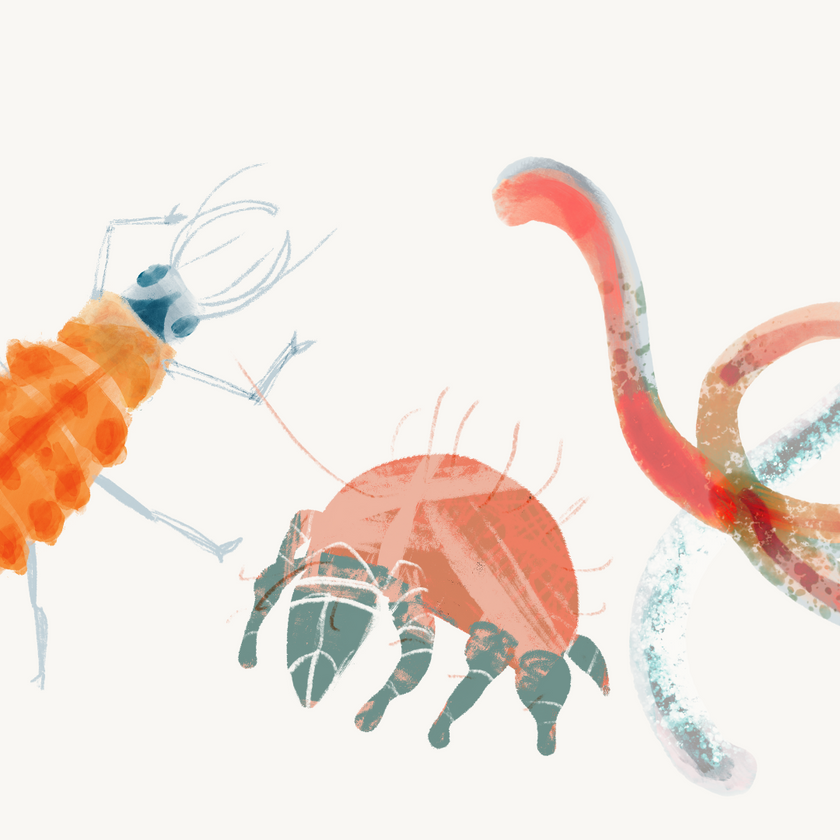Summer often brings cozy evenings outside, but also the annoying presence of mosquitoes. Fortunately, there are various anti-mosquito products available to protect you from these annoying insects. But how environmentally friendly are these products? In this blog, we discuss the four most commonly used anti-mosquito methods: DEET spray, the mosquito plug, mosquito net and candles with citronella. We discuss the pros and cons of each product, and look at the impact on the environment.
1. DEET spray
DEET is an abbreviation of diethyltoluamide , a substance that repels insects and ticks. There are various theories about how DEET works, but it is likely that mosquitoes, for example, find this substance unattractive¹. So it does not kill the insect or tick.
Advantages:
DEET is one of the most effective substances for keeping mosquitoes at bay. It works quickly and provides hours of protection, making it ideal for use while hiking, camping, or other outdoor activities.
Disadvantages:
Although DEET is effective, it is not without risks. DEET can cause skin irritation in some people, and pregnant women and young children should be careful when using the insect repellent. In addition, DEET is harmful to plastic and other synthetic materials, which can damage clothing and equipment.
Environmental impact:
DEET is not biodegradable and can enter the environment via wastewater. High concentrations can potentially be harmful to aquatic organisms. In 2011, researchers found that DEET concentrations in water are so low that it has no negative effect on water fleas and algae ² . However, more research is needed to investigate effects on aquatic organisms.
2. Mosquito plug
A mosquito plug works by slowly evaporating an insect repellent, often a liquid or tablet, into the air. Many mosquito plugs use chemicals such as prallethrin or metofluthrin . These substances act on the nervous system of the insect. At high concentrations, the insect is paralyzed and eventually killed. The mosquito plug is not harmful to humans when used normally.Advantages:
The mosquito plug is a commonly used solution against mosquitoes. The big advantage is the convenience: you plug it into the socket and don't have to do anything else. It also works for a long time, which is especially useful at night.Disadvantages:
The biggest disadvantage of the mosquito plug is the use of chemicals, such as prallethrin, which are not only harmful to mosquitoes, but also to other insects and even to humans with prolonged exposure. Prallethrin is toxic to aquatic organisms such as fish ³ , which means that this substance can be harmful if it enters the environment.Environmental impact:
By using synthetic insecticides, the mosquito plug contributes to chemical pollution. Although the amount per plug is small, the large-scale use of this type of product can lead to negative effects on the ecosystem.3. Mosquito net
A mosquito net, also known as a mosquito net or a mosquito net, is a fine-meshed net designed to keep mosquitoes and other insects out. Modern mosquito nets are usually made of lightweight materials such as polyester.
Advantages:
A mosquito net is one of the most environmentally friendly ways to protect yourself from mosquitoes. It is a physical barrier that prevents mosquitoes from coming near you without using chemicals. Mosquito nets are also durable and can last for years.Disadvantages:
Using a mosquito net requires some preparation and can be difficult to hang correctly. In addition, a mosquito net does not provide protection when you are outside the protected zone, such as when walking.Environmental impact:
Because a mosquito net does not use chemicals, the impact on the environment is minimal. The only possible disadvantage is the material the mosquito net is made of, often polyester, which is not biodegradable. A mosquito net made of organic cotton would be a more environmentally friendly alternative.4. Candle with Citronella

Advantages:
Citronella candles can create a pleasant atmosphere while keeping mosquitoes away. They are easy to use and contain no synthetic chemicals.Disadvantages:
The biggest disadvantage of citronella candles is that they are only effective within a limited radius. In addition, the mosquito-repellent properties of citronella are not as strong as those of chemical agents such as DEET or prallethrin. So they do not offer complete protection.Environmental impact:
Citronella candles have a relatively low environmental impact, especially if they are made from natural ingredients such as soy wax or beeswax. Candles made from paraffin, a petroleum byproduct, are less environmentally friendly.Conclusion: Which method is best?
If you are looking for an eco-friendly way to protect yourself from mosquitoes, the mosquito net is the best choice. It offers effective protection without harmful chemicals and has a minimal impact on the environment. Citronella candles can be a good additional method for outdoor use, especially if you choose them based on natural materials.
The mosquito plug and DEET spray are effective, but contribute to chemical pollution and can be harmful to both the environment and your health. Consider these options only if you need strong protection and use them sparingly to limit the impact on the environment.
By consciously choosing environmentally friendly mosquito repellents, you contribute to the protection of both your own health and that of the planet. You can check whether an active substance is harmful to yourself or the environment via the website www.waarzitwatin.nl of the central government.
Sources:
¹ Syed, Z., & Leal, W. S. (2008). Mosquitoes smell and avoid the insect repellent DEET. Proceedings of the National Academy of Sciences, 105(36), 13598-13603.
²Weeks, J. A., Guiney, P. D., & Nikiforov, A. I. (2012). Assessment of the environmental fate and ecotoxicity of N,N‐diethyl‐m‐toluamide (DEET). Integrated Environmental Assessment and Management, 8(1), 120-134.
³Richterová, Z., & Svobodova, Z. (2012). Pyrethroids influence on fish.

















































